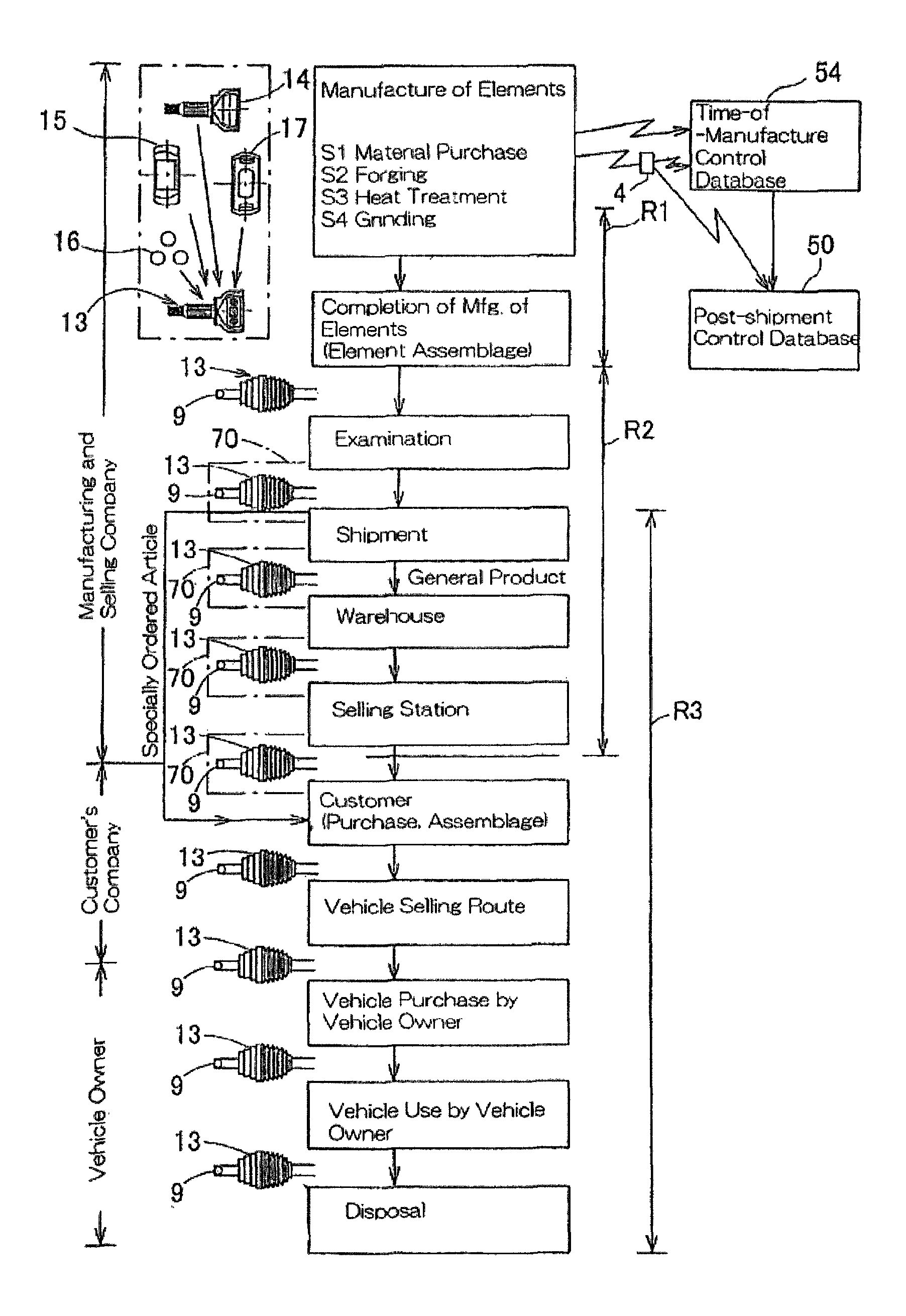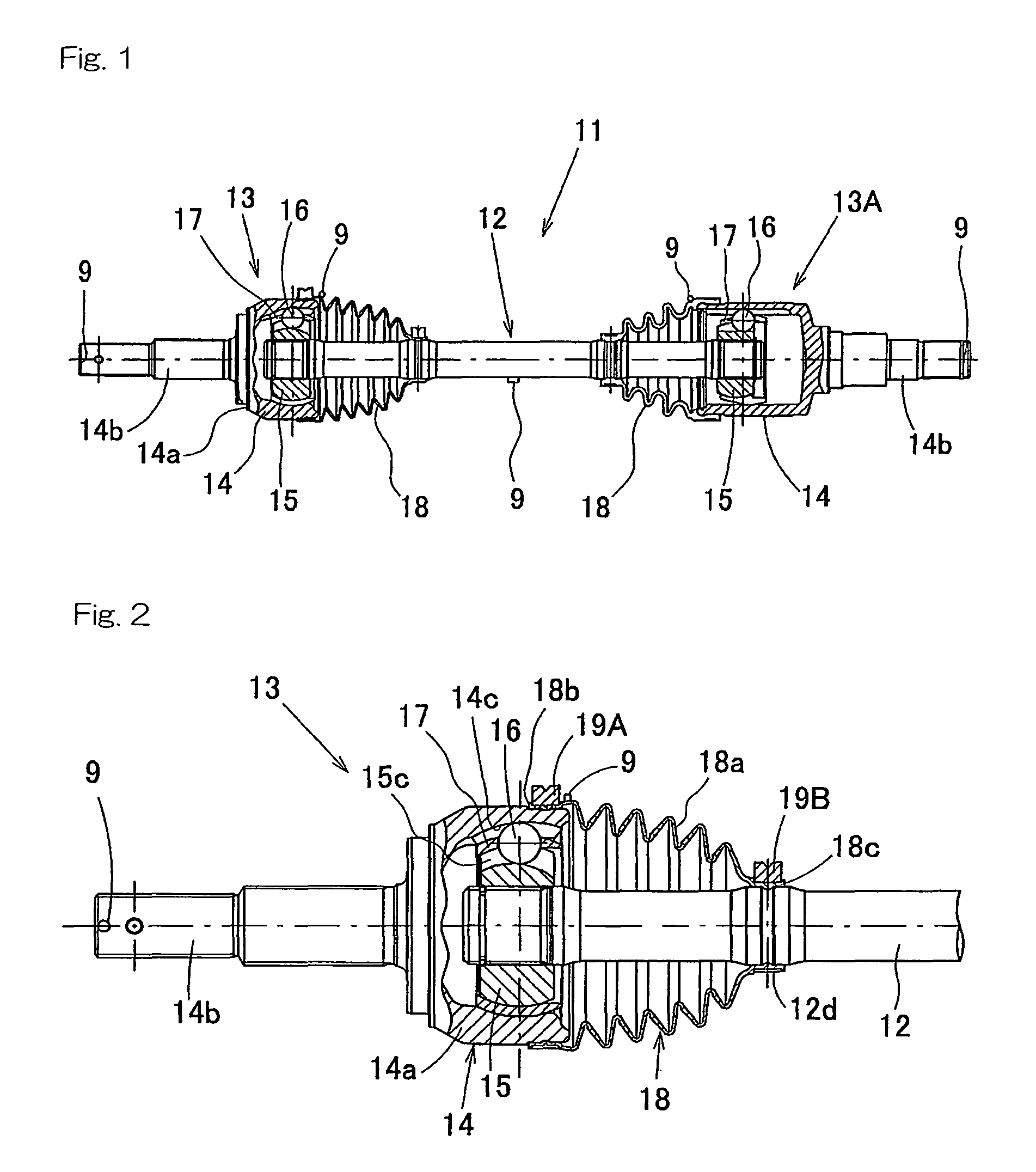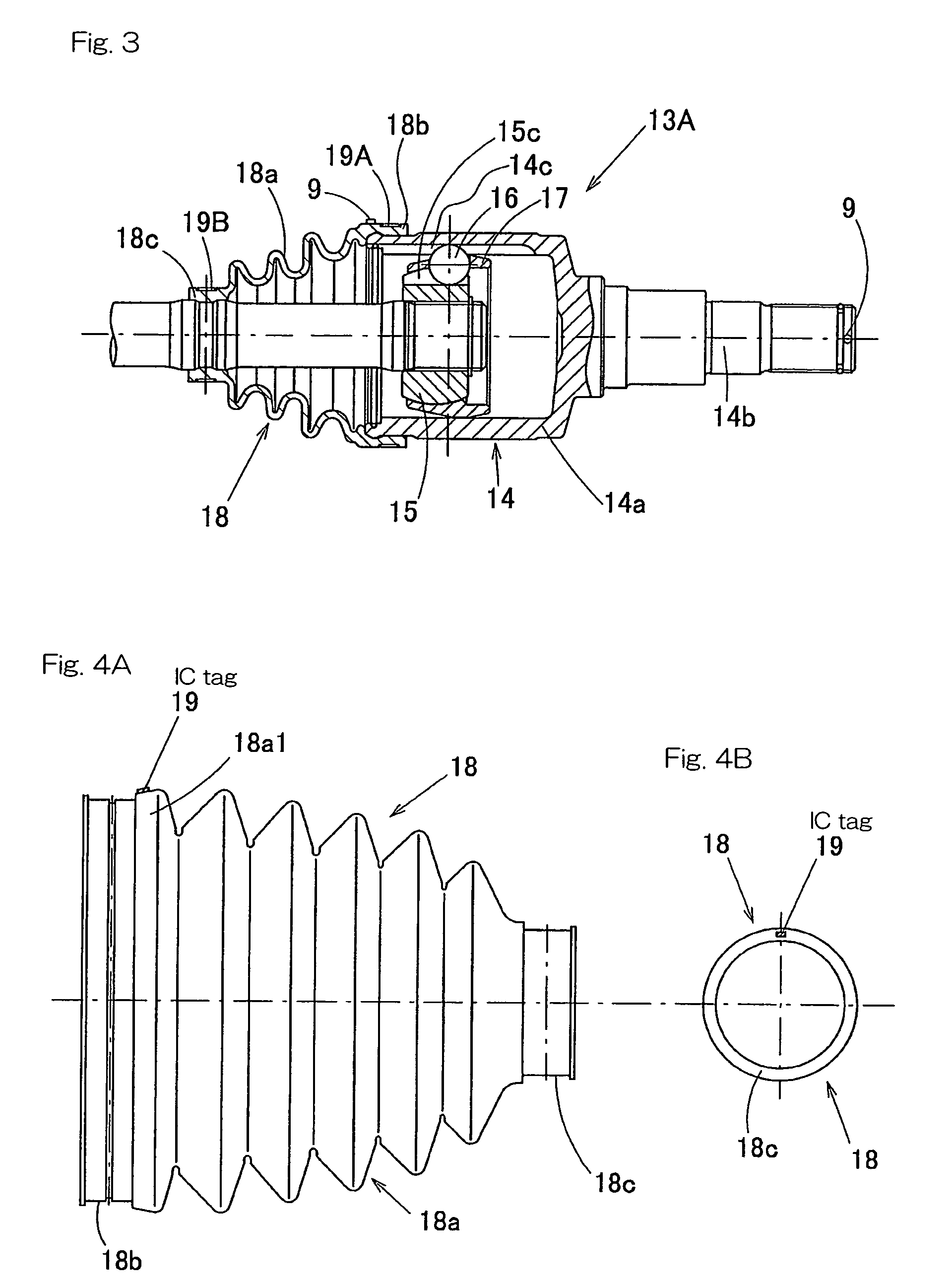Constant velocity universal joint and quality control method for the same
a constant velocity universal joint and quality control technology, applied in the field can solve the problems of increasing the cost inability to confirm the actual use of constant velocity universal joints in a particular status, and inability to achieve standard ic tags to achieve satisfactory information recording, etc., to achieve the effect of facilitating control, custom control and/or maintenance control
- Summary
- Abstract
- Description
- Claims
- Application Information
AI Technical Summary
Benefits of technology
Problems solved by technology
Method used
Image
Examples
Embodiment Construction
[0144]Preferred embodiments of the present invention will now be described with particular reference to the accompanying drawings.
[0145]Specifically, FIG. 1 illustrates a vehicle drive shaft 11 having a pair of constant velocity universal joints mounted thereon, and FIGS. 2 and 3 illustrate those constant velocity universal joints on an enlarged scale, respectively. Referring to FIG. 1, the vehicle drive shaft 11 is made up of an intermediate shaft 12, a fixed type constant velocity universal joint 13 mounted on one of opposite ends of the intermediate shaft 12 and a sliding type constant velocity universal joint 13A mounted on the other of the opposite ends of the intermediate shaft 12. The fixed type constant velocity universal joint 13 is adapted to be drivingly coupled with a wheel support bearing assembly (not shown) of an automotive vehicle, whereas the sliding type constant velocity universal joint 13A is adapted to be drivingly coupled with a drive transmission system (not s...
PUM
 Login to View More
Login to View More Abstract
Description
Claims
Application Information
 Login to View More
Login to View More - R&D
- Intellectual Property
- Life Sciences
- Materials
- Tech Scout
- Unparalleled Data Quality
- Higher Quality Content
- 60% Fewer Hallucinations
Browse by: Latest US Patents, China's latest patents, Technical Efficacy Thesaurus, Application Domain, Technology Topic, Popular Technical Reports.
© 2025 PatSnap. All rights reserved.Legal|Privacy policy|Modern Slavery Act Transparency Statement|Sitemap|About US| Contact US: help@patsnap.com



